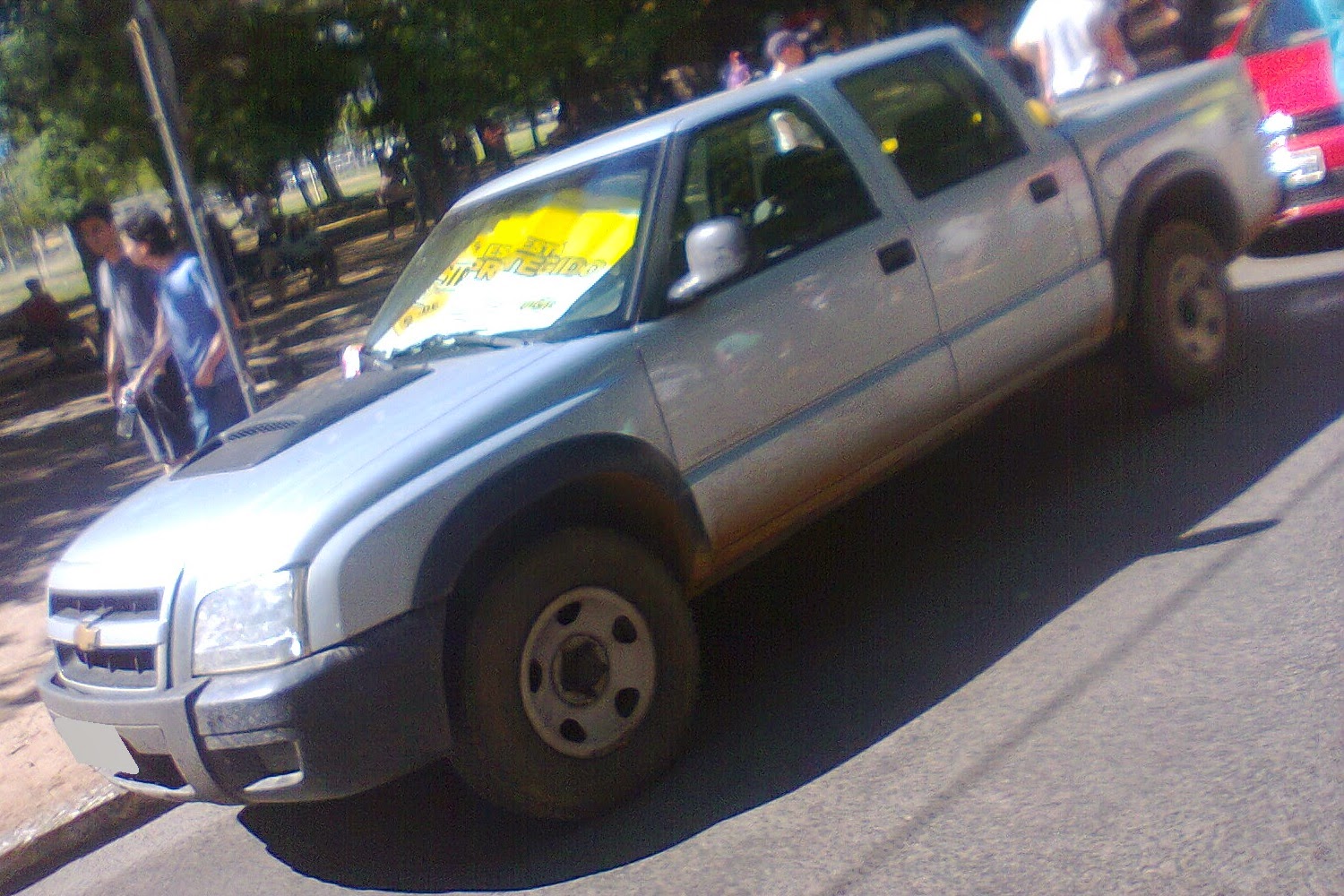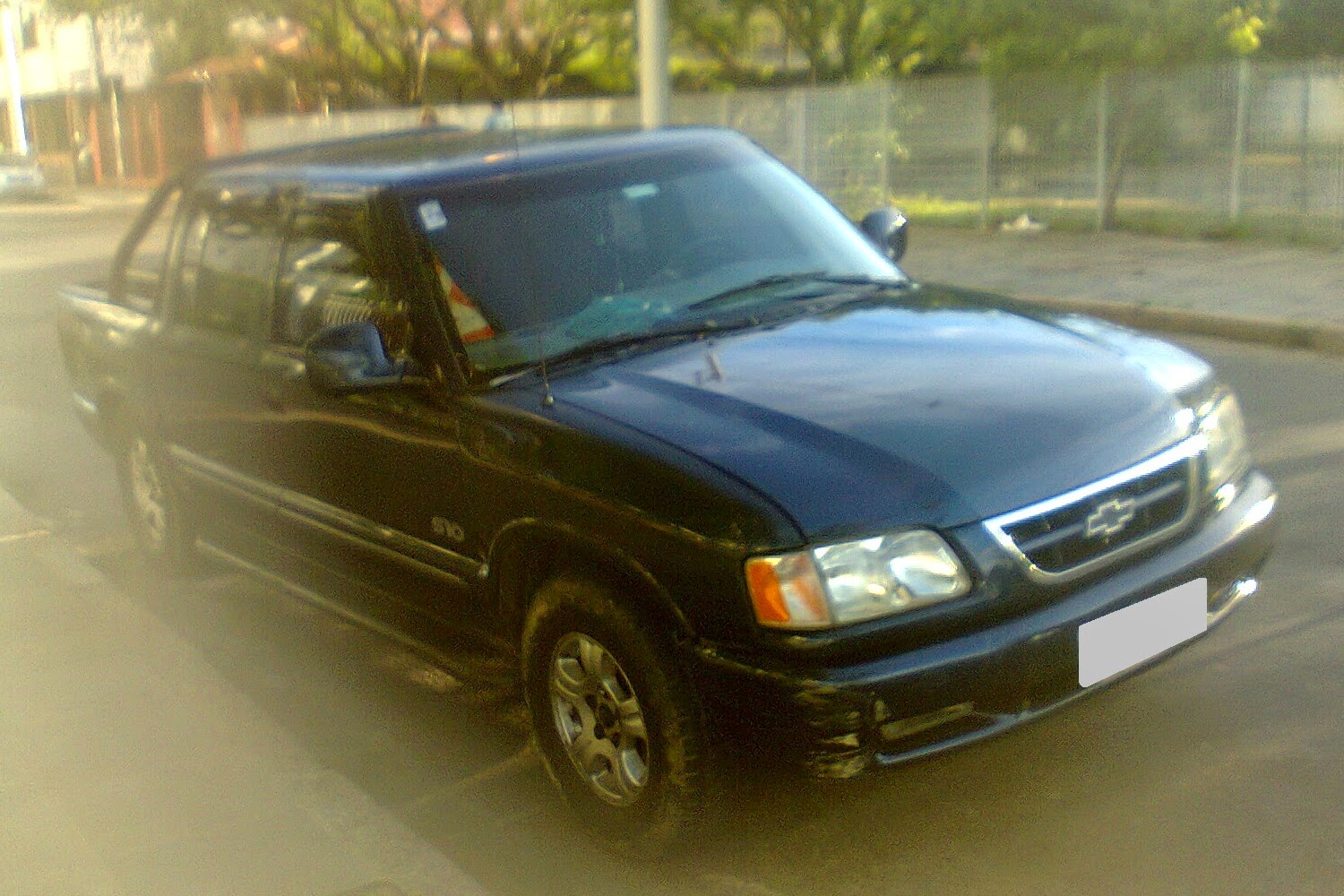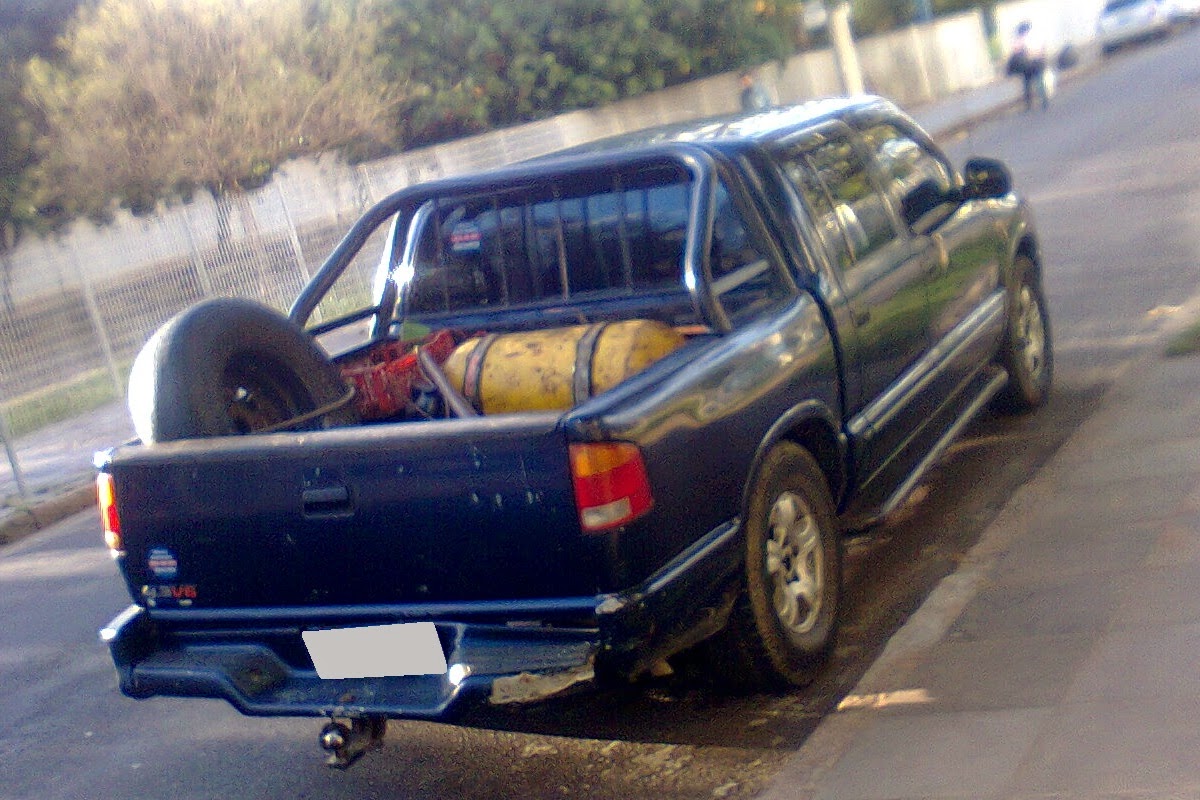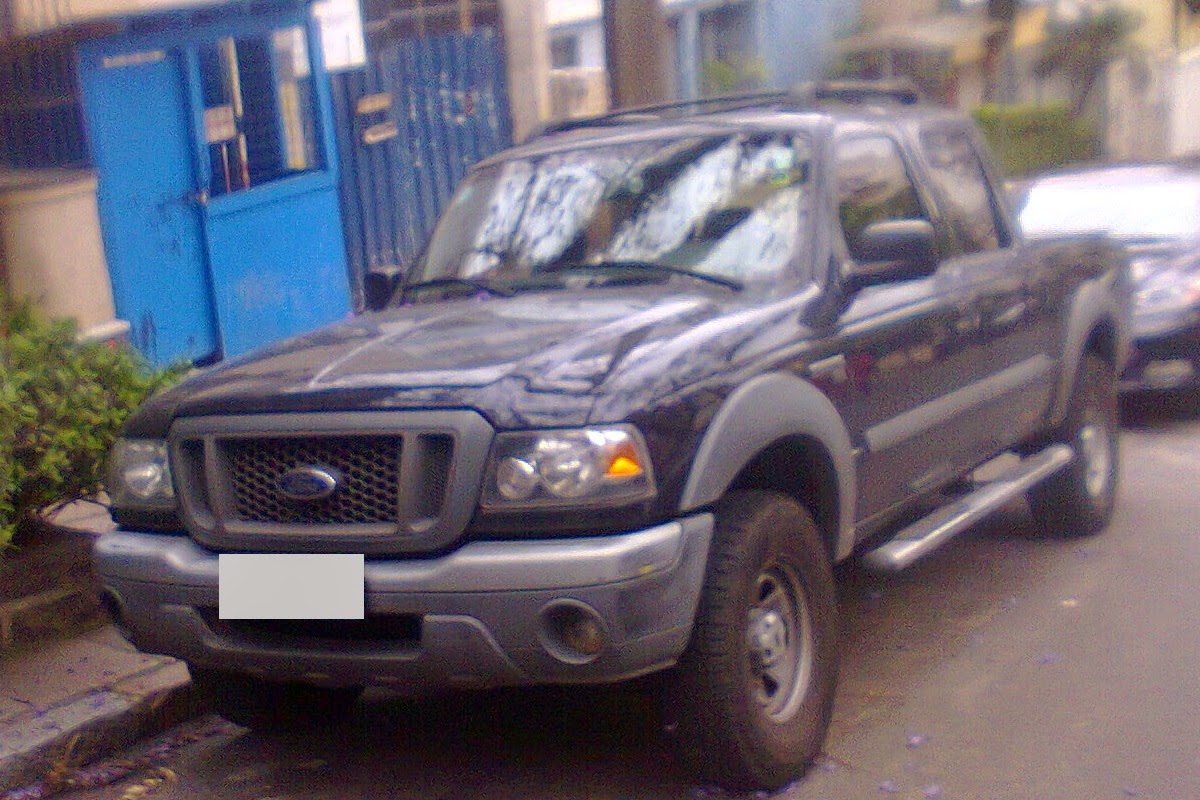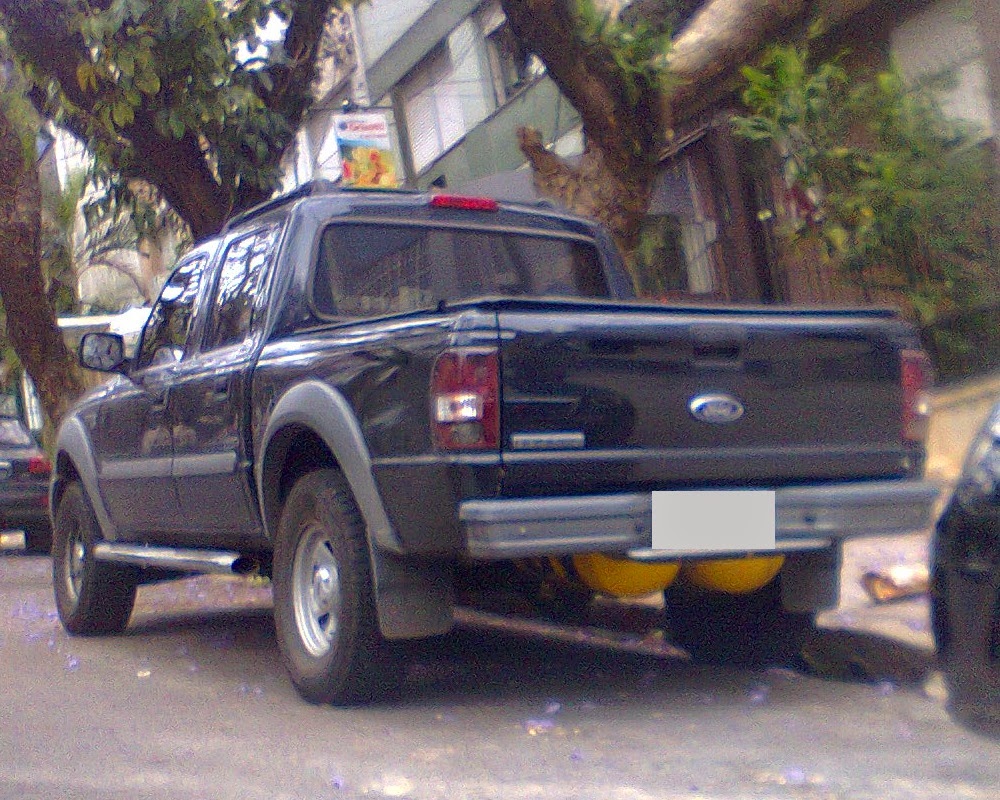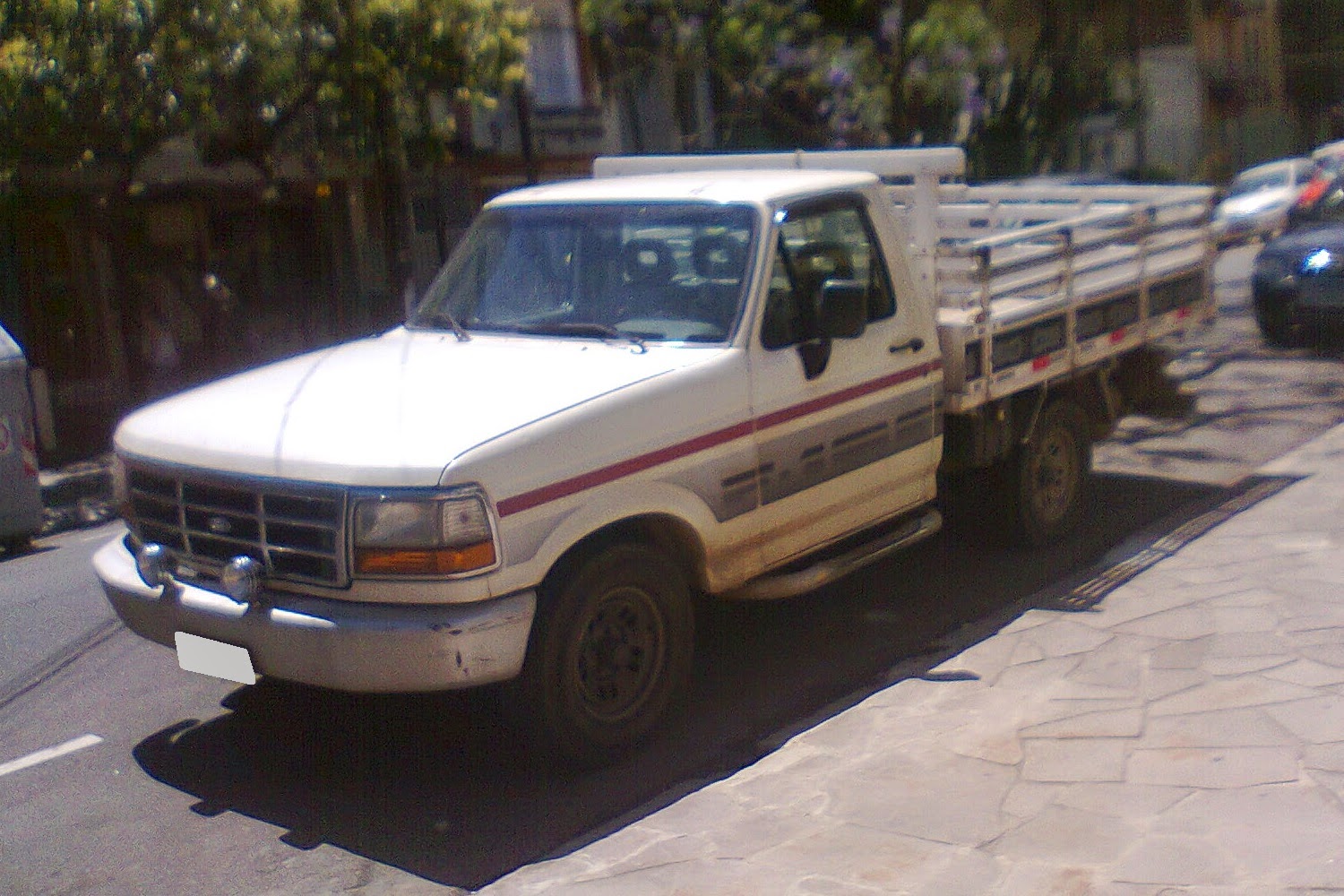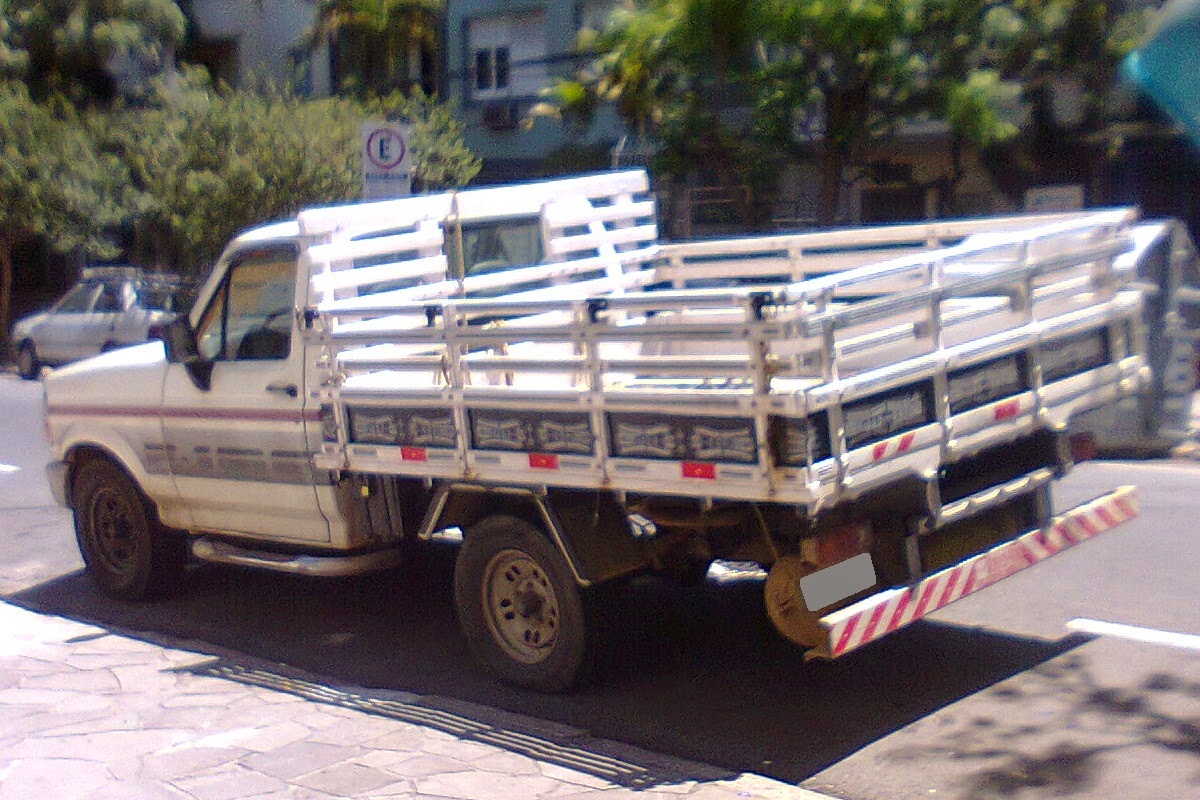Yesterday morning while I was walking my dog in another neighborhood nearby, I saw this Fiat Siena Tetrafuel, the first vehicle factory-fitted to run on gasoline, ethanol and compressed natural gas (CNG). What surprised me the most, actually, is the fact that this one didn't had a taxi livery, which is pretty much unusual since its main market had always been the taxi segment in Brazil. Actually, the Tetrafuel nameplate is not so accurated, since it runs on gasoline, ethanol and CNG, not considering Brazilian-standard E20/E25 gasohol as a distinct fuel at all. It has a pair of 6.5m³ trunk-mounted CNG tanks, and only one single tank for the liquid fuels at its regular underbody location. The engine is a 1.4L Fire with the 8-valve head and natural aspiration, and power figures were 67hp while running only on CNG, 80hp on gasoline, and 81hp on ethanol. Introduced in 2006 alongside the already-available gasoline/ethanol flexfuel variants, the Tetrafuel was phased out in Brazil in 2011 and replaced in 2012 by a Tetrafuel variant of the Grand Siena which was introduced in that year. The old model had its production transfered to Venezuela, where it had been a captive import, and the Venezuelan-made version was rebadged Dodge Forza.
Monday, January 12, 2015
Monday, January 05, 2015
A few CNG-powered trucks in my hometown
Compressed Natural Gas, or CNG, was initially deployed as an automotive fuel in Italy during the inter-wars period, and is currently pointed as one of the easiest-to-implement measures to reduce the dependence on Middle-East oil, alongside ethanol. It's usually extracted from fossil reserves, either in oil wells or isolated, but since its basic component is Methane gas it can also be sourced from any organic matter residue in landfills and wastewater treatment plants. It's often also pointed as more sustainable than ethanol and biodiesel, because its impact on food prices and availability is lower. The main markets for CNG-powered vehicles nowadays are India, Pakistan, Argentina and Brazil. Their presence in Europe and the USA is increasing in commercial vehicles, but is still not so popular among private car owners due to the lack of refuelling stations in spite of the availability of Natural Gas as for stationary applications such as power generation, home heating and cooking fuel. Anyway, the folks at Ecomodder and CNGChat might like these ones...
Brazilian versions of the Chevy S10 have an Opel-designed 4-cyl engine available, initially as gasoline-powered but gasoline/ethanol flexfuel since '05, instead of the Vortec 2200 from their American equivalent. This on was originally a flexfuel, so now with the CNG setup it became tri-fuel capable...
This other S10 has the 4.3L V6 engine, and the CNG tank is visible at the pick-up box. Couldn't see any underbody tank, but since the spare tyre had been relocated to the box it may have released some space to fit other tanks, which would be kinda useful considering the thirst of the V6...
Another V6, this time a single-cab. Also fitted with a single box-mounted tank, but since it didn't have clearance issues with the wheel wells a bigger tank could be fitted...
The Dodge Dakota is considered a lemon in Brazil, because its local production run had been too short ('99-'01) and, in spite of running on the American 4WD chassis and suspension setup due to the harsher pavement conditions, it was only available in 2WD. It was also kinda expensive when new, and all of its gasoline-powered engines were imported. The 4-cyl 2.5L and the 3.9L V6 were made in the USA while the 5.2L V8 came from Venezuela. The only Brazilian-made engine was the Diesel-powered one, a VM Motori R425 OHV license-made byDetoilet Detroit Diesel which had some overheating issues and was more expensive to overhaul than the Diesel engines used in its opponents, leading a handful of owners to repower them with engines from other similarly-sized trucks such as the MWM Sprint 4.07 TCA used in the S10 from '99 to '05 and the Toyota 3L and 5L-E from the Hilux. Many of the surviving gasoline-powered ones had been converted to CNG, such as this one with extended cab and the V6 engine.
This double-cab Ranger was available only in South American RHD markets (except French Guyana where a rebadged Euro-spec Mazda B-Series was sold as the Ranger) and Mexico, because the Ranger made in Argentina is available there since late '97. Ford even offered a CNG-prep package for the 2.3L 4-cyl engine in Brazil from '06 to '12, and a bi-fuel CNG installation was a factory option for the ones fitted with the 4.0L V6 engine in Venezuela from June '09 to early '12. There is a conversion shop certified by Ford to perform the service in Brazil, but the certified conversions had the CNG tank mounted in the pick-up box, while this one had a non-certified conversion with underbody tanks in the stock spare tyre location. At least the spare tyre takes less useful space in the box than a CNG tank would...
In spite of the side graphics suggesting that it could be an F-100, it's a Brazilian equivalent to the American F-250 and was known locally as F-1000. The last zero on the graphics would appear in the stock sheetmetal pick-up box if it wasn't converted to a wooden one. Engine is the gasoline-powered 300cu.in. inline-6, backed by a 5-speed manual transmission. This one was fitted with a single CNG tank mounted under the box, still visible from the sides or from the rear bumper gaps.
Brazilian versions of the Chevy S10 have an Opel-designed 4-cyl engine available, initially as gasoline-powered but gasoline/ethanol flexfuel since '05, instead of the Vortec 2200 from their American equivalent. This on was originally a flexfuel, so now with the CNG setup it became tri-fuel capable...
This other S10 has the 4.3L V6 engine, and the CNG tank is visible at the pick-up box. Couldn't see any underbody tank, but since the spare tyre had been relocated to the box it may have released some space to fit other tanks, which would be kinda useful considering the thirst of the V6...
Another V6, this time a single-cab. Also fitted with a single box-mounted tank, but since it didn't have clearance issues with the wheel wells a bigger tank could be fitted...
The Dodge Dakota is considered a lemon in Brazil, because its local production run had been too short ('99-'01) and, in spite of running on the American 4WD chassis and suspension setup due to the harsher pavement conditions, it was only available in 2WD. It was also kinda expensive when new, and all of its gasoline-powered engines were imported. The 4-cyl 2.5L and the 3.9L V6 were made in the USA while the 5.2L V8 came from Venezuela. The only Brazilian-made engine was the Diesel-powered one, a VM Motori R425 OHV license-made by
This double-cab Ranger was available only in South American RHD markets (except French Guyana where a rebadged Euro-spec Mazda B-Series was sold as the Ranger) and Mexico, because the Ranger made in Argentina is available there since late '97. Ford even offered a CNG-prep package for the 2.3L 4-cyl engine in Brazil from '06 to '12, and a bi-fuel CNG installation was a factory option for the ones fitted with the 4.0L V6 engine in Venezuela from June '09 to early '12. There is a conversion shop certified by Ford to perform the service in Brazil, but the certified conversions had the CNG tank mounted in the pick-up box, while this one had a non-certified conversion with underbody tanks in the stock spare tyre location. At least the spare tyre takes less useful space in the box than a CNG tank would...
In spite of the side graphics suggesting that it could be an F-100, it's a Brazilian equivalent to the American F-250 and was known locally as F-1000. The last zero on the graphics would appear in the stock sheetmetal pick-up box if it wasn't converted to a wooden one. Engine is the gasoline-powered 300cu.in. inline-6, backed by a 5-speed manual transmission. This one was fitted with a single CNG tank mounted under the box, still visible from the sides or from the rear bumper gaps.
Subscribe to:
Posts (Atom)


